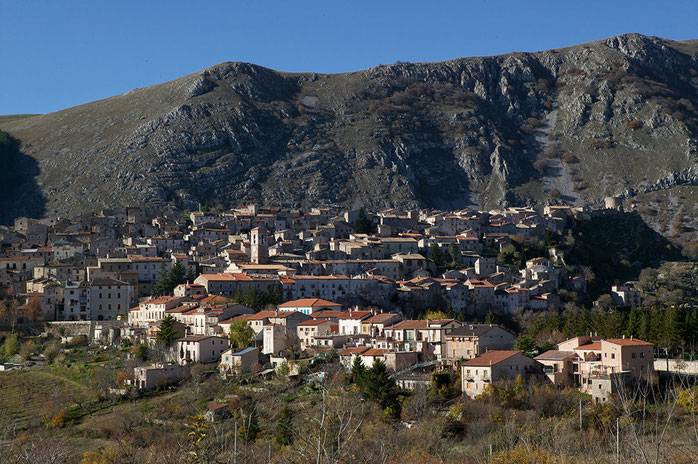Ortona dei Marsi

The town of Ortona dei Marsi rises to a height of 1058 m. on a high ground which closes the valley of the river Giovenco, this settlement has always been an important boundary node between the lands of two people, Marsi and Peligni, therefore, an important passage in the road that leads from Rome to the Adriatic Sea and to the regions more southern. Around the fifth century B.C. the most important city of the valley was Milionia, during the Third Samnite War in 294 B.C. was destroyed by the Roman army and the population dispersed in small villages. One of these, Fundus Magnus , developed at the foot of a height, probably around a fortified structure of an italics temple. This agglomeration gave rise to a village called Ortonam.

In the following centuries the life in the small villages took place in a quiet and isolated thanks to the protection of the high mountains that surround it and the river Giovenco. Around the eleventh century, several political events presaged further clashes and different strategic needs, Perhaps it is for this reason that later was built the round tower and fortifications which still dominate the high hill where Ortona is built. These buildings do not are built on foundations because they were built on solid rock that emerges everywhere, like most of the old houses of the village and the church of St. John the Baptist which boasts the title of Collegiata which testifies to the importance attained from Ortona in the Middle Ages. A tour in the town offers the pleasure of discovering foreshortenings and remains of Roman and medieval time; the seven hamlets offer unique realities, sometimes emptied by emigration, surrounded by small farms rich in orchards reveal a rural world not much changed from centuries ago.
Ortona dei Marsi , one of the gates of the National Park of Abruzzo, Lazio and Molise, is nestled in a lush and well-preserved nature. Worth visiting are the oak Colicillo, a natural monument by some 400 years old easily accessible from the village of Cesoli and the remains of megalithic walls at the village of Rivoli.






















